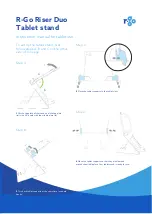
83
Control Track. A synchronizing signal on the edge of a tape,
which provides a reference for tracking control and tape speed.
Digital Audio. A means of storing and transmitting sound using
binary digits to replicate the audio waveforms.
Display. Numeric display. Time Code/Message Display.
Drop Frame. Drop frame is one of the two SMPTE code types,
and is the NTSC color television standard. When using this code
type, 108 specific frame numbers are "dropped" for each hour of
time code.
EBU. EBU time code is 25 frame running at 25 fps.
ERR. Error or offset error. Indicates that the display shows the
difference between the actual position of the machine in relation to
where it should be.
Frame. A single image on a motion picture film or a television
picture formed from two interlaced fields. One complete video
scanning cycle, one complete SMPTE time code word.
Frame Lock. Frame lock synchronizes the Master and Slave(s)
using
all of the information available in the reference time code
address.
Frame Rate. The number of frames that go by in one second of
audio, film or video tape. Film and different types of video all have
different frame rates.
30
30 fr/s
Monochrome TV, & audio
NTSC
29.97 fr/s
Color videotape, TV operations
PAL
25 fr/s
European TV, European Broadcast, & audio
Film
24 fr/s
Film cameras & projectors
HH:MM:SS:FF. Hours:Minutes:Seconds:Frames. A SMPTE time
code address or value.
Lock. The transport has synchronized with the system reference.
LTC. Longitudinal Time Code. Time code information encoded in
binary coded decimal (BCD) form which is recorded as an audio
signal on a designated track of a VTR or an ATR.
Machine. Machine refers to the generic concept of tape or hard
disk-based record/playback hardware.
MIDI. Musical Instrument Digital Interface. This serial data
language is used by microprocessors in synthesizers, sequencers,
drum machines, signal processors, and computers. It provides





































